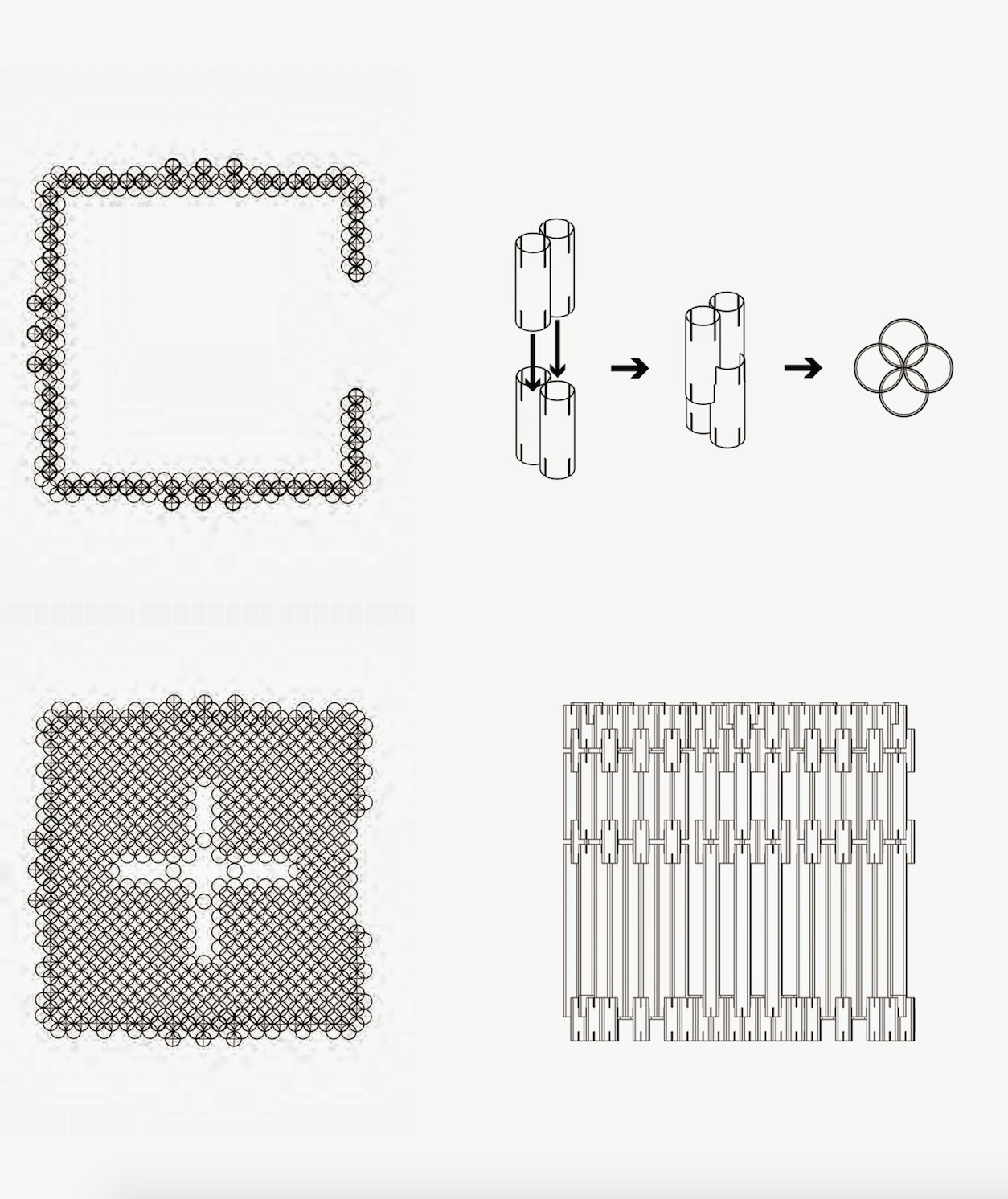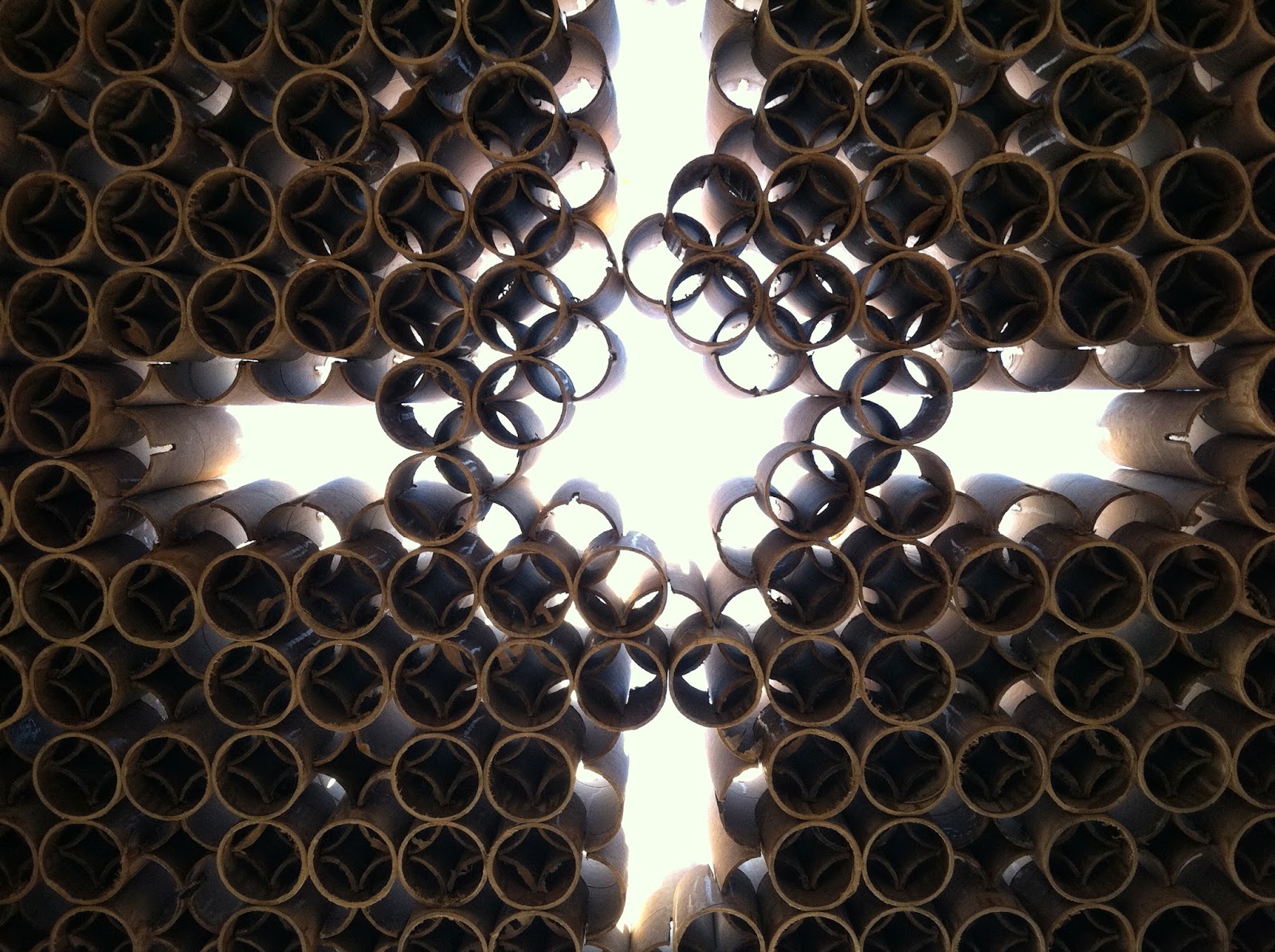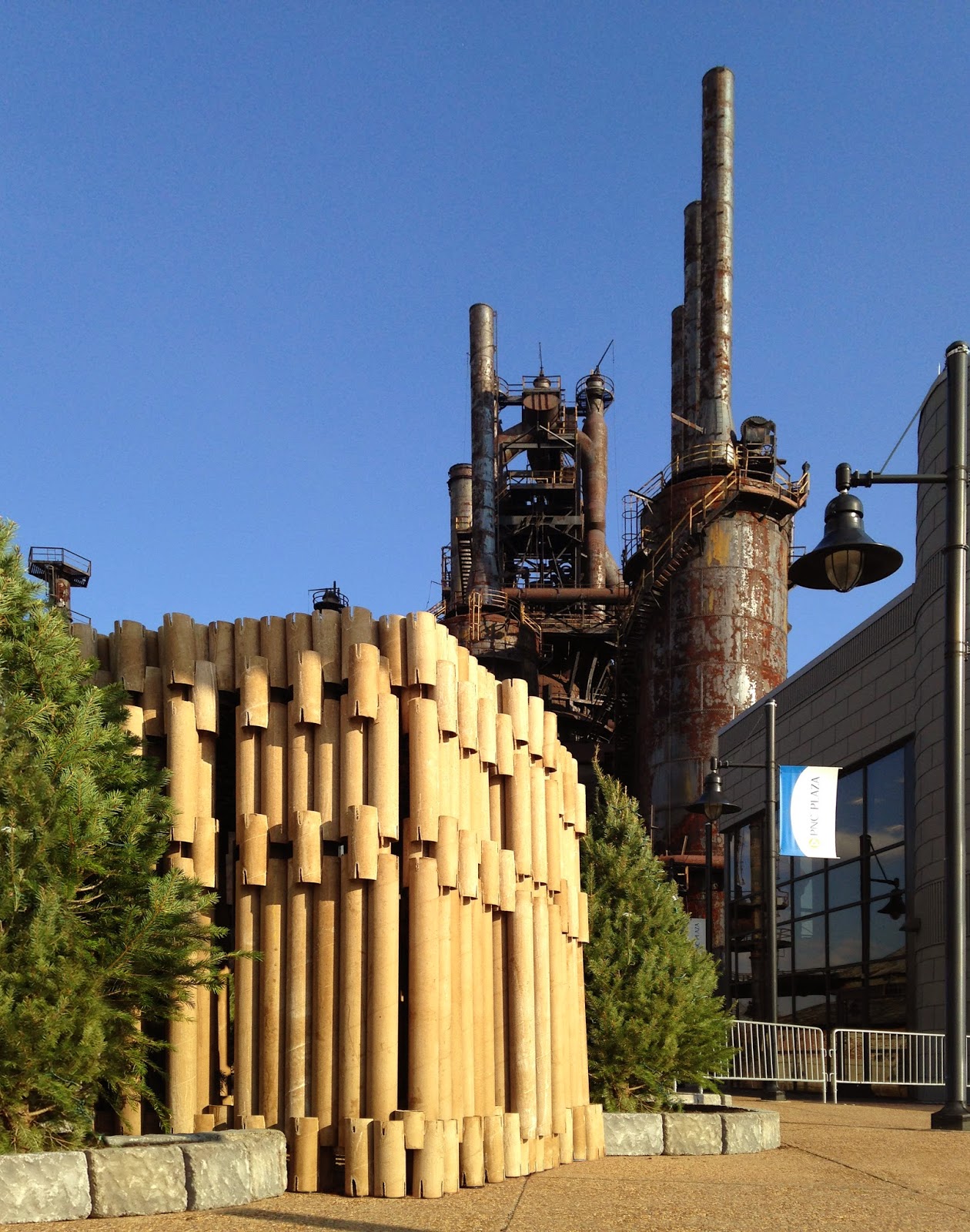Last year, Spillman Farmer’s entry to the inaugural Playhouse Design Showcase and Competition was awarded first place. While we were humbled by the recognition, we knew that when this year’s competition rolled around, we would need to make some changes to minimize our materials, streamline our process, and improve our product.
Our fascination with the module of material took us down an interesting path. We wanted to develop a structure that was light and easy to assemble: an eco-friendly structure that could be configured by a child without any tools, glue, or fasteners. To build the structure, we wanted a singular, durable material that could be used as the structural system, the walls, the roof, and the furniture: cardboard. Cardboard not only fits all of these criteria, but has already been established as a kid-favorite (perhaps to the chagrin of parents everywhere, when they realize that the toys in the cardboard box aren’t as popular as the cardboard box itself)!

Playhouse Design Concept
Exploration with cardboard is not new; international architect Shigeru Ban has been experimenting with paper architecture for nearly three decades. Ban used cardboard tubes from textile factories for disaster relief shelters. Using paper tubing for frames helped save money, prevent theft, and conserve the local trees.
Our cardboard tubes, originally headed for the landfill, came from large-format roll paper stock from our friends at Print-O-Stat. We began to develop a cloverleaf module of friction-fit tubes to help influence the overall form. The cloverleaf plan morphed into a structural totem, which eventually became the walls. The same cloverleaf module used in the wall pieces became the structural diaphragm for the roof. The connectivity of material allowed for an incredible play of light.

View of the playhouse’s ceiling from the interior

Spillman Farmer’s playhouse at Christkindlmarkt
The final construct reminded me of Swiss architect Sigurd Lewerenz’s chapel designs at St.Mark’s and St. Peter’s in Sweden, and the Swiss Pavilion at the 2000 Expo in Hannover, Germany by architect Peter Zumthor. The notion of using one material everywhere in search for what is essential is reminiscent of a primitive style of building.
As we reflect on the process, we are in awe of the possibilities of this construct, the module, and the discipline of working within the inherent restraints of a material system. Great design is informed by restraints and rules, and quite often, designs with the most restrictions and rules yield the most innovative design.
Our playhouse, along with the other participants’ entries, are on display at Christkindlmarkt starting today! Visit the festival between now and December 21 for your opportunity to see and explore the playhouse designs.
The Spillman Farmer design was built by Spillman and sponsored by:
3 Cubed Studio
Curious Explorations
Our interest in materials, placemaking, and positively impacting the human experience through design led to the idea of curious explorations: our ventures into design/build, furniture design, and material research.
Learn more